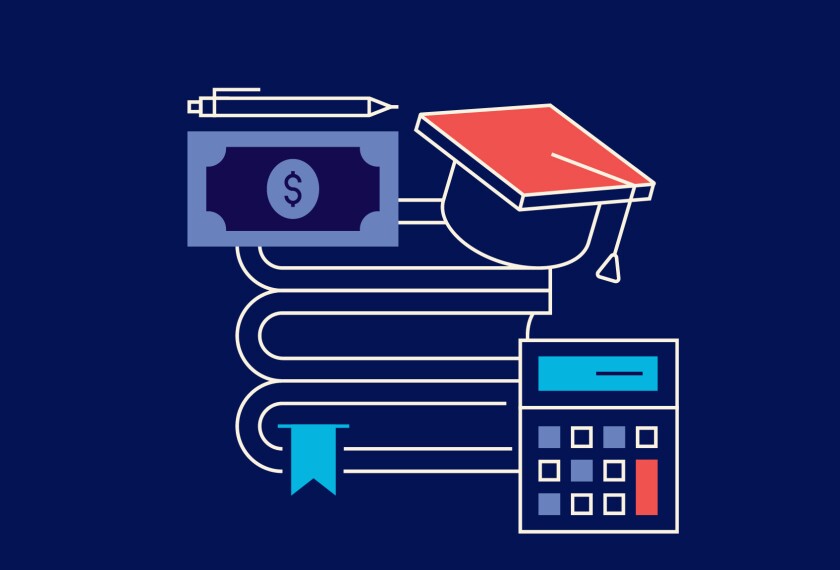Corrected: An earlier version of the map with this article incorrectly displayed Minnesota and Wisconsin. It has been corrected to show Minnesota among the states prohibiting “lunch shaming.” Wisconsin does not have any such prohibition.
When adults don’t pay their electric bills, the power company responds by turning out the lights. But when students show up to school with unpaid lunch bills, cafeteria workers struggle to respond in a way that doesn’t hurt or stigmatize a child. Some serve “alternative meals,” like cheese sandwiches, to students with negative balances beyond a certain threshold. Some refuse to serve meals at all if an account is too far in the red. The strategy, called “lunch shaming” by child hunger groups, has been the subject of state laws, a proposed federal bill that would ban it, and—most recently—proposals by Democratic presidential candidates. But school nutrition directors say that the issue is more complicated than some people may realize, and that it’s not always poverty that leads to overdrawn lunch accounts. Here’s why unpaid school meal balances can be a challenge for schools, how some are already addressing the problem, and why it may be an appealing issue for the 2020 campaign trail.

Why Is Free School Lunch an Appealing Political Issue?
Sen. Bernie Sanders, I-Vt., tucked a call for universal free school meals into a sweeping education plan he released last month, citing stories on unpaid student bills.
Julián Castro, who is also campaigning for the Democratic presidential nomination, also included free universal meals in his education plan. Neither candidate detailed the cost of their proposals.
“Instead of addressing this crisis, students with lunch debt are sometimes denied meals, have debt collectors sent after their families, and are even denied their diplomas,” Sanders’ plan says. “Unacceptable. It is not a radical idea that no child in this country should go hungry.”
How schools feed hungry students is an appealing issue for candidates seeking to appeal to voters concerned about poverty, especially because it’s so much easier for the public to digest than more complicated economic issues.
Stories about unpaid meal debt often spread rapidly online. After a Pennsylvania cafeteria worker quit rather than withhold a lunch from an elementary school student whose family was $25 behind on meal payments, strangers launched viral campaigns to pay down balances in other school districts.

Most Students Already Eat Free School Lunches
A majority of school lunches—68 percent in February—are already free, the most recent U.S. Department of Agriculture data show. The federal government will spend about $13.8 billion on the National School Lunch Program this year.

And some schools and districts already offer free school lunches and breakfasts universally through a federal program created under the Healthy, Hunger-Free Kids Act of 2010.
A school or a school system qualifies for what’s known as the Community Eligibility Provision if at least 40 percent of its enrollment is made up of “identified students,” who live in households that participate in other federal income-based programs, like the Supplemental Nutrition Assistance Program. Congressional Republicans have sought to change the program’s requirements in the past, facing opposition from anti-hunger groups.
Those groups say community eligibility eliminates stigma from free meals and encourages more hungry students to eat. But not all schools who would be eligible for community eligibility participation.
Some states, like Oregon, have also expanded the income limits for free school meals, paying the difference for families whose incomes fall above the federal qualifying levels.


Why Is Unpaid Meal Debt Such a Challenge for Schools?
School meal programs have limited margins for extra expenses, and any uncovered costs present a challenge, said Diane Pratt-Heavner, a spokesperson for the School Nutrition Association, which represents school nutrition workers around the country. The organization surveyed its members and found that 75 percent reported unpaid meal debt at the end of the 2016-17 school year.
“There’s not extra funding available to provide meals available for free to students who are not enrolled in the free meal program,” she said.
In 2017, the USDA required districts to post policies defining how they will deal with meal debt, how they will collect on unpaid bills, and when debt will be considered “bad debt” that can’t be recouped.
Schools have sought to tackle the issue in a variety of ways: Allowing families with extra funds at the end of the year to forward that money to an “angel fund” that can cover others’ unpaid bills, making calls home to students with large amounts of debt to assist parents in filling out applications for the free or reduced-price meal programs, and even withholding things like diplomas from students until they settle.

States Tackle ‘Lunch Shaming’
An increasing number of states have passed “lunch shaming” bills that prohibit schools from withholding meals from students or communicating with anyone other than parents and guardians about unpaid balances.
But those bills can make the debt problem worse, nutrition directors said.
The 20,000 Hillsboro, Ore., district ended the 2016-17 year with a total of $1,200 in unpaid meal debts, nutrition director Nathan Roedel said. After Oregon passed a “lunch shaming” bill, the distict stopped providing alternative meals to overdrawn students and that total grew to about $45,000 at the end of the 2017-18 school year. By June 1, that number had reached $104,000 for the current school year.
And, counter to popular perception, it’s not always poverty that keeps students from paying, Roedel said. Some families face language barriers, and some are just disorganized, Roedel said.
Ultimately, he thinks lawmakers will have to help districts cover the costs of bad meal debt if it continues to grow.
“I think people are well meaning,” he said. “But it’s the real world application that’s hard.”







